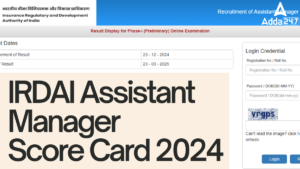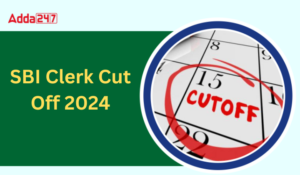Dear Readers,
The reasoning is a game of wits and presence of mind! Yes, it is true and it might seem as the greatest of the challenge after English Section’s surprises but yet this one can easily be dealt with. You just need correct practice and hardwire your brain to quickly make decisions of what to attempt and what to leave. And for same we are providing you questions of Reasoning Question. To Practice more with these new pattern Reasoning Question for IBPS PO and Clerk Exam 2017.
Direction (1-5): Study the following information to answer the given Questions
Ten persons from ten different cities viz. Darbhanga, Pune, Goa, Kolkata, Guna, Noida, Ranchi, Gaya, Kanpur and Lucknow are sitting in two parallel rows containing five people each, in such a way that there is an equal distance between adjacent persons. In row 1- A, B, C, D and E are seated and all of them are facing south. In row 2 – P, Q, R, S and T are seated and all of them are facing north. Therefore in the given seating arrangement, each member seated in a row faces another member of the other row.(All the information given above does not necessarily represent the order of seating in the final arrangement.)
The person from Kolkata sits to the immediate right of Q. P faces one of the immediate neighbors of the person who is from Pune. D faces one of the immediate neighbors of the person from Goa. S is not from Goa. D is not from Guna. R sits second to the left of the persons who is from Lucknow. A sits third to the right of person who is from Noida.Only One person sits between the person from Kanpur and Q. C sits to the immediate left of the person who faces Q. Only two people sit between B and E. The person from Guna sits second to the right of the one who faces S. S does not sit at an extreme end of the line. One of the immediate neighbors of the person from Guna faces Kanpur. P does not face A. The person from Darbhanga sits second to the right of the person from Gaya.
Q1. Who amongst the following faces the person from Ranchi?
(a) The person from Darbhanga
(b) D
(c) The person from Noida
(d) The person from Kanpur
(e) B or E
Q2. T is from which of the following Cities?
(a) Goa
(b) Kolkata
(c) Ranchi
(d) Kanpur
(e) Guna
Q3. Which of the following is true regarding C?
(a) C sits an extreme end of the line
(b) None of the given options is true
(c) C is from Gaya
(d) The person from Kolkata faces C
(e) The person from Ranchi is an immediate neighbor of C
Q4. If R is related to A and Q is related to D then in the same way S is related to?
(a) B
(b) E
(c) Either B or E
(d) C
(e) None of these
Q5. Who amongst the following sit at extreme end of the row?
(a) The person from Darbhanga and R
(b) The persons from Gaya and A
(c) A and the person from Goa
(d) The persons from Noida and Goa
(e) A, C
Directions (6-10): Study the following information to answer the given questions.
In a certain code language,
‘banks take tougher steps’ is written as ‘GT#5 LS#7 ZF@4 ZT#5 ’
‘ordinance to amend the’ is written as ‘ SF#3 NE#5 LP@2 IF#9 ’
‘deal with specific stressed’ is written as ‘ GE@8 KD@8 RI@4 VM@4’
Q6.What is the code for ‘empowered’ in the given code language?
(a) KE#9
(b) KE#81
(c) KE@9
(d) EK@9
(e) None of these
Q7. What is the code for ‘banking regulation’ in the given code language?
(a) ZH#7 VO@15
(b) YH#7 VO@10
(c) ZH#7 OO@10
(d) ZH#7 VO@10
(e) None of these
Q8. What is the code for ‘tougher steps’ in the given code language?
(a) LS#8 GT#5
(b) LS#7 GT#5
(c) LS#7 GT#10
(d) LS#17 GT#5
(e) None of these
Q9. What is the code for ‘financial year’ in the given code language?
(a) RN#9 VS@4
(b) RM#9 VS@14
(c) RM#9 VS@4
(d) RM#19 VS@4
(e) None of these
Q10. What is the code for ‘bankruptcy’ in the given code language?
(a) ZZ@15
(b) ZX@10
(c)YZ@10
(d) ZZ@10
(e) None of these
Directions (11-15): The following questions are based on the five three-digit numbers given below:
342 783 617 549 288
Q11. If 1 is added to the second digit of each of the numbers how many numbers thus formed will be divisible by three?
(a) None
(b) One
(c) Two
(d) Three
(e) None of these
Q12. If in each number the first and the third digit are interchanged then which number will be the highest number?
(a) 288
(b) 549
(c) 342
(d) 783
(e) 617
Q13. If in each number the first and the second digit are interchanged then which number will be the second lowest number?
(a) 268
(b) 617
(c) 342
(d) 783
(e) 549
Q14. If all the digits in each of the numbers are arranged in descending order within the number which of the following will be the second highest number in the new arrangement of the numbers?
(a) 342
(b) 783
(c) 617
(d) 288
(e) 549
Q15. What will be the resultant number if the second digit of the lowest number is divided by the second digit of the highest number?
(a) 4
(b) 2
(c) 1
(d) 3
(e) 0





 The Hindu Review October 2022: Download ...
The Hindu Review October 2022: Download ...
 IRDAI Assistant Manager Score Card 2024 ...
IRDAI Assistant Manager Score Card 2024 ...
 SBI Clerk Cut Off 2024, Check Previous Y...
SBI Clerk Cut Off 2024, Check Previous Y...




